Чудовищно мощный BMW M5 E34 с мотором S70 V12
Поколение E34 BMW М5 не получает так много любви, как оно заслуживает. И это не удивительно, учитывая его невероятно впечатляющего предшественника в кузове E28. Тем не менее, это один из автомобилей, достойных внимания фанатов BMW. Особенно вот этот, на фото.
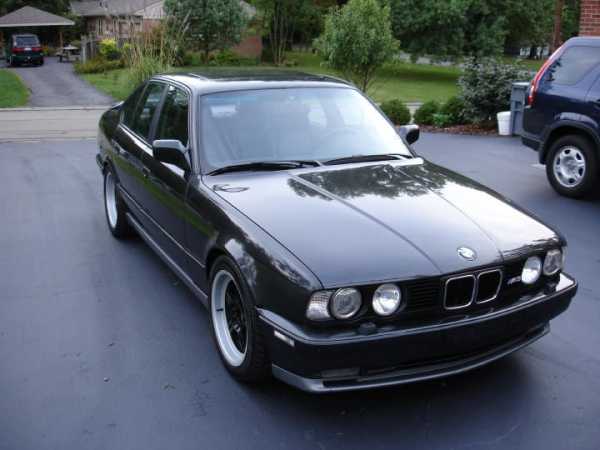
Данная машина продаётся, но её владелец пошёл дальше других, создав самую экстремальную E34, которую вы когда-либо видели. Стандартный 3,6 литровый мотор R6 (который к слову выдавал 311 л.с.) заменили на V12 S70B56 от BMW 850CSi, и теперь под капотом этого “жеребца” 420 лошадиных сил.

На этом превращения не закончились. Далее стандартную коробку передач заменила шестиступенчатая Getrag 560G с короткоходной кулисой, соединённая с самоблокирующимся дифференциалом Quaife. Чтобы можно было хоть как-то притормозить существенно прибавившего в скорости “скакуна” применены двухсекционные тормозные диски с 4-поршневыми суппортами. Дополняют комплект новых запчастей стабилизаторы, амортизатры и пружины фирмы H&R, вкупе с выхлопной системой Eisenman. То есть в данном проекте модернизированы все наиболее важные системы: двигатель, тормоза, подвеска.
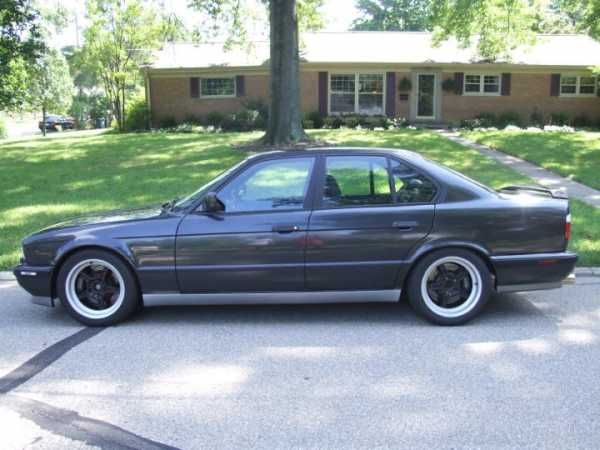
Между тем, автомобилю уже 23 года, а об его возрасте напоминает лишь слегка потускневшая краска цвета Diamond Swartz Metallic на крыше и багажнике. До переделки машина была куплена в Koala Motorsport в Кливленде, и на тот момент её пробег был равен 73 тысячам миль. На данный момент на одометре всего 70 000 миль, так что можно сказать что машина почти новая. Классические колёсные диски звездообразной формы хозяин менять не стал, отдавая дань уважения немецкому автопрому 90-х.
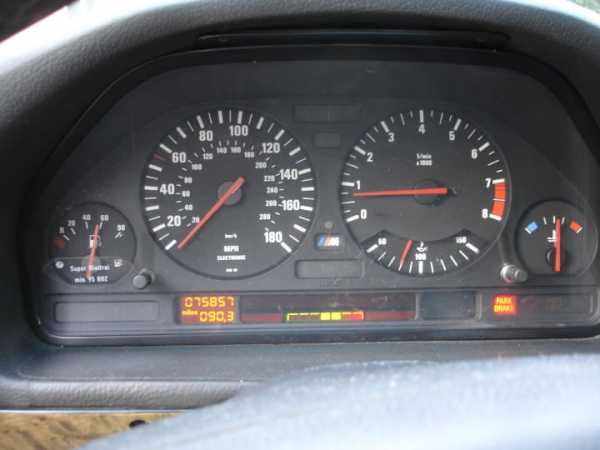
Интерьер этого BMW тоже не растерял своего очарования со временем. Разве что короткий рычаг коробки передач немного портит его лоск. Конечно же, качество отделки не такое, как сейчас, но ведь это машина из 90-х.
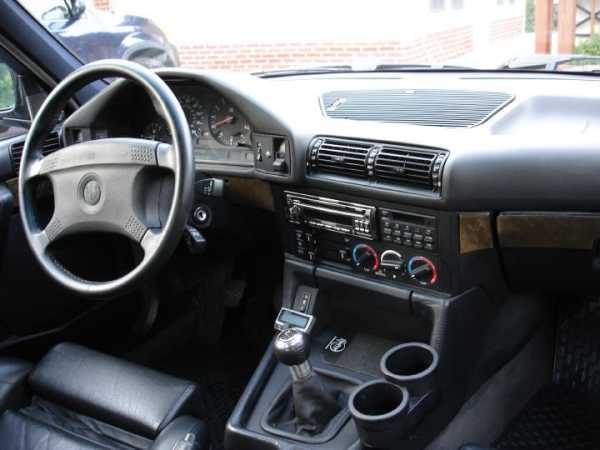
В целом, это одна из самых крутых тюнинговых E34 M5, которую мы когда-либо видели. И хоть её внешность не столь вызывающая, как у некоторых других проектов, все его модернизации были серьезными, высококачественными и делают этот автомобиль воистину темпераментным. Он способен доставить немалое удовольствие от вождения, ведь к услугам водителя новые двигатель, дифференциал и коробка передач с 6 скоростями.

Все это удовольствие можно получить за 16 500 долларов. Это конечно не дешево за 23-х летний автомобиль, но представьте какой фан принесет этот V12 под капотом в сочетании с классическим M5.
Подробные характеристики
Model: 1993 European M5 chassis
Chassis: WBSHC91090GD63011
Build Date: June 1992
Mileage: 76,000 miles
Colour: Black
Motor: 5.6L 850 CSi engine (S70B56) conversion
Interior: black leather mechanical sports seats, leather stitched center console and door skins
Transmission: new 6 speed manual
Traction Control:
Brakes Front: 2-piece, 355 (14″) rotors UUC 4 piston aluminum calipers
Brakes Rear: vented 328mm (12.9″) rotors
Wheels: 17 x 8 forged system II
Tires: 235-45 and 275-40 Dunlop Sport 5000
Features: front strut bar, HR springs, uprated sway bars, UUC short shifter, Eisenman stainless exhaust, in dash CD
Options: single air bag, ABS, rear deck wing, rear window shades, E code headlights, clear blinkers, Motorsport door handles
Comments: Hand built custom driveline by Brett Anderson from Koala Motorsport, Cleveland OH. Sold and registered as 1993. Self-leveling not removed – still functional. New EDC shocks all ’round. Quaife LSD.
Ссылка на авто
bmwguide.ru
mid_e34
mid_e3410 августа 2017
2
karlon3
Я переписывался с владельцем Мондео, который серьезно этим вопросом занимался. Говорит не знает ни одной удачной установки адаптива на нее с 2.5. Сам с Кугой 2.5 тоже пытался настроить с опытным товарищем: АКК цепляется за ведущим, активно тормозит, но при попытке разгона радар отваливается с ошибкой данных от двигателя
Нужен держатель датчика дождя ФК2, ФФ3.
Мало ли кто лобовое разбил или есть доступ к битым стеклам. Отдельно, увы, не продается
Lexagon
Она работает и на тысячах других машин – простейшая развязка через реле.
mid_e34
21 апреля 2017 странно, у меня сумка почти заподлицо сидит с крюком. В верхней части липучка за нишу тоже цепляется. При поворотах никуда не летит, липучка мошная
петля с гайкой, скорее всего крепится в районе крюка, для цепей. Сам еше не разбирался, жду погоду
mid_e34
19 апреля 2017
1
крюк в специальной сумочке укладывается в правую нишу в багажнике. На ней и липучки есть. И сама сумочка в форме ниши сделана
mid_e34
17 апреля 2017
Мне у дилера ставили и активировали – надо будет глянуть эту опцию…
mid_e34
12 апреля 2017
StanislavZ
Насколько знаю, там крепеж другой – нужно будет отдирать от битого стекла и клеить взамен своего
mid_e34
4 апреля 2017 lesnykh64
сигнал должен быть на включение камеры от кан-модуля. От фонаря ничего не нужно подключать. Может на корпусе ГУ наклейка с сигналами есть?
mid_e34
4 октября 2016 так, все таки, будет работать адаптив на 2.5АТ? Я ради него приборку поменял на большую…
mid_e34
25 марта 2016
Смотрел сегодня новую Кугу-Титаниум – кнопка без кантика идет и ничего – если б специально не смотрел, то и не знал бы, что его может не хватать ))) Так что не парьтесь – не оставляя кантик – думаю, что он может вылезать и мешать использованию сигнала
ffclub.ru
BMW 5 series E34 history and specifications
The BMW E34 is the version of the BMW 5 Series automobile sold from February 1988 to 1995 with the Touring model ending June 1996. It replaced the BMW E28 in 1988 and was replaced by the E39 in 1996.
Development ran from July 1981 to late 1987, with design specifications being chosen in 1982 and finalized for production in mid-1985.
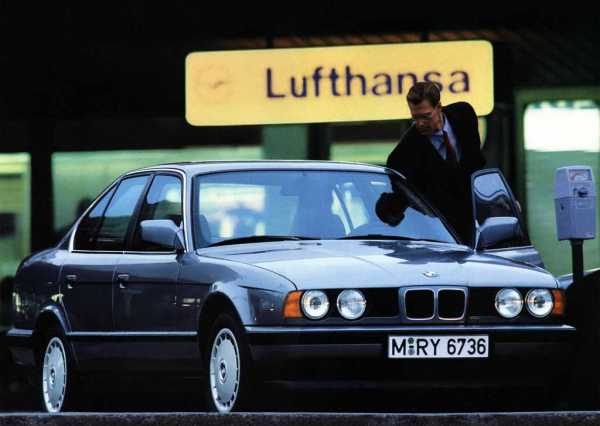
In the North-American market the E34 succeeded the BMW E28 in May 1988 with two models. The 525i used the BMW M20 engine while the 535i used the larger M30. The cars were a blend of BMW tradition and modern technology.


BMW’s traditional FR layout and straight-6 were used, providing the smooth engine and optimal weight distribution BMW customers had come to expect.
New 5-series also had a much stiffer body and was more streamlined than its predecessor, and had design cues introduced in 1986 on the 7-series by designer Ercole Spada. J Mays was equally responsible for the final production E34 design in 1984, later completed in summer of 1985, following the 1982 and 1983 proposals by Spada.
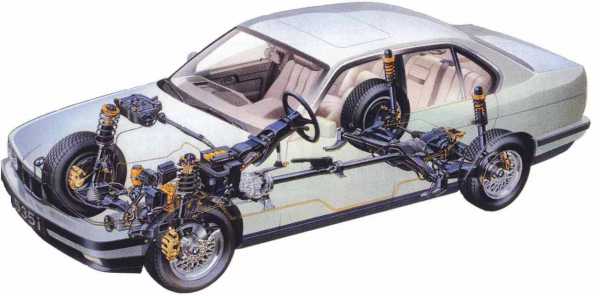
The E34 was among the most reliable luxury cars on the market, earning the best-in-class ratings from Intellichoice in 1991, and still considered one of the most reliable BMWs ever made. It was also one of the safest cars on the road during its production, providing airbags, 4-wheel anti-lock brakes, and a very rigid body structure to protect occupants in the event of an accident. It was also equipped with traction control (ASC+T) in later years on higher-specification variants.
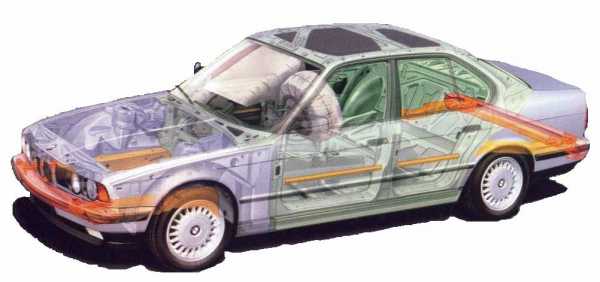
Features
Europe
- Standard Equipment: AM/FM cassette with 6 speakers, rear defroster, dual-zone heating, programmable interval windshield wipers, driver’s side airbag (after 1990), 4-wheel anti-lock brakes (after 1991), heated door locks and heated windscreen washer nozzles.
- Standard Power Accessories: Steering, side mirrors, central locking system, including trunk and gas filler door locks.

USA
US models feature all the standard and power equipment of the European models, plus the following.
- Standard Equipment: Air conditioning, AM/FM Cassette with 10 speakers and external amplifier (some models pre-wired for factory CD Changer after 9/90), leather interior (535i, 530i, 540i, M5).
- Standard Power Accessories: 10-way electronically adjustable front seats, 4x power windows with driver’s side one-touch up, electronic one-touch sunroof [After 1992].
ASC was 1st available on 1991 535i models and is quite rare. LSD (limited slip differential) was optional on 525i models. Most 1995 525i models came with ASC.
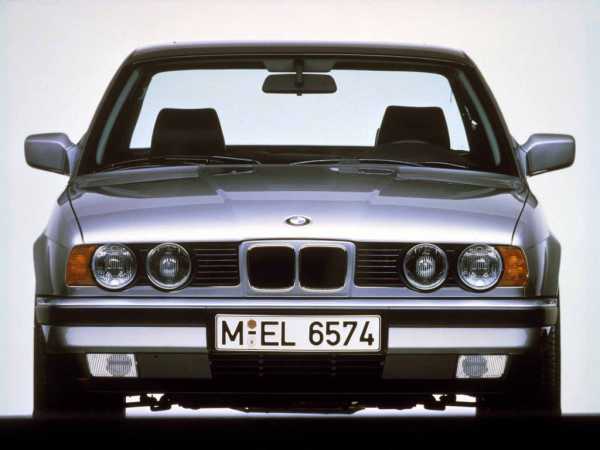
Identifying Models and Model Years by Styling Cues (USA)
- US models were never equipped with headlight and foglight washers or rear foglights.
- 1989 models did not come with wood trim.
- 1989 525i models did not have the 4-spoke SRS steering wheel. The passenger Airbag was introduced on 1994 models, and replaced the classic BMW upper dash storage tray dating back to the 2002.
- 1989-1990 models had black upper dashboards regardless of interior color, from 1991-1995 they matched the interior trim (black, parchment, grey, ultramarine, etc.). 1989-1991 525i models came with cloth interior – Leather was optional. Leatherette replaced cloth as standard equipment in the following years.
- Some 1989 535i models did not come with cross-spoke wheels. All `90`-93 535i and `94-`95 530i models came with cross-spoke wheels. 540i models (excluding 540i sport) were equipped with a unique honeycomb cross-spoke wheel. `89-`94 525i models were equipped with multi-spoke wheels. Most `95 525i models had cross-spoke wheels.
- Island Green was available from 1990–1993, and was replaced by Oxford Green from `94-`95. Glacier Blue, Calypso Red and Azure Blue are some of the rarer colors – the latter especially. Glacier Blue identifies a `89-`91 model. Ultramarine is the rarest interior color, avail. pre `93 (non M5).
- Pre 1991 models had yellow and blue back lit buttons for the A/C, recirculation and rear defogger activation – later models had a small green light indicating activation.
- All models from 1992-1995 have italic model badges on the trunklid. For example, a `91 535i reads 535i, whereas a `92 535i reads 535i.
- Pre `93 models had a larger driver’s side wiper wind deflector.
- In 1993, the side rearview mirror were modified for better aerodynamics and wind-noise.
- Wood Grain hue, pattern and finish was unique each year from 1993-1995.
- 1994-1995 texture and gathering on leather seats was slightly more pronounced than previous years.
- In 1995, lower trim (rocker panels and lower front and rear valance panels) were now body-color where previously they were black. `95 models can also be identified by an additional turn-signal lamp aft of the front wheel housing. In addition, the 1995 interior door cards on premium package 525i models and all 530i and 540i models were upgraded to a more luxurious diagonal semi-overlaping leather pattern. `95 models came with redesigned 4-spoke SRS wheel now incorporating colored BMW roundel badge. This wheel was unique to only 1995 E34 models.
- M5 models came with supple leather and front seat and headrest design unique to the M5, though the `95 540i front seat and headrest design is a close clone. M5 models, like they were in the E28 chassis, came with luxurious Velour trunk lining and carpeting – Black Headliner was also standard fare. No M5 models were equipped with ASC due to the racing engine induction properties in which ASC was not compatible. The M5 was the only model equipped the rear headrests. Most M5 models did not come with wood trim.
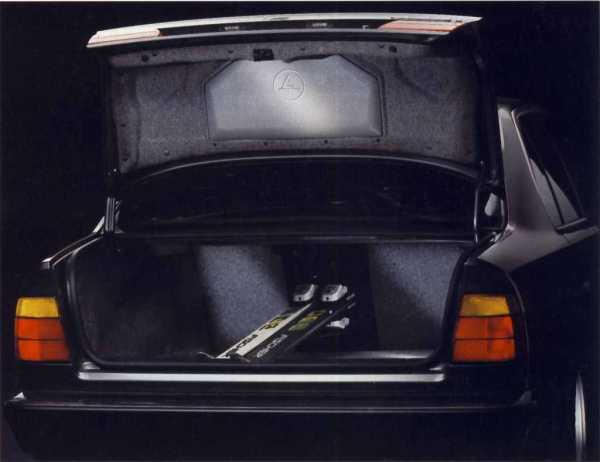
Options
- On-board computer (standard on all US-spec)
- Trunk-mounted 6-disc CD changer
- Cruise control
- Fully automatic dual-zone air conditioning
- Heated seats
- Seat and mirror memory
- Lordosis support in seats
- Heated headlight and foglight washers with larger reservoir
- Servotronic power steering
- Sport suspension upgrade
- Passenger airbag
- Automatic Stability Control (ASC, also ASC+T with traction control)
- Keyless entry system with deadbolt
- Curtains in rear window and rear side windows (non-US-spec)
- Leather interior
- Arm rests on front seats
- Ski bag integrated into rear seat bank
- Light package with focused reading lights front and rear
- Refrigerator built into rear seat back
- Wood panels on center console
- Glove compartment and door panels
- Fold-down rear seat bank (touring)
- Telephone between the seats
- Nubuck leather head liner (non-US-spec)
- Complete leather including dashboard
- Rear shelf (non-US-spec).
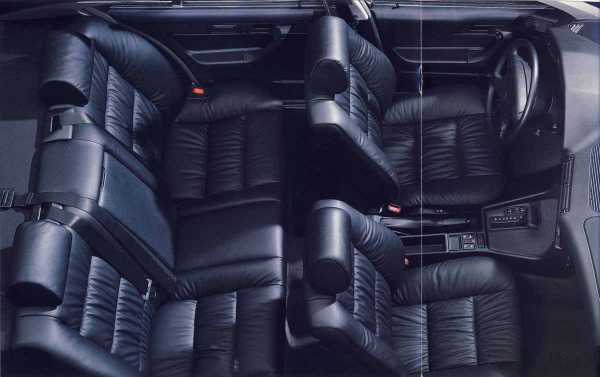
On-board Computer
The BMW E34 offered an advanced on-board computer integrated into the center console and dash cluster. The computer could be set to calculate average gas mileage, average speed, fuel range, estimated time of arrival, and distance remaining to destination. The computer could also display basic information such as outside temperature, date, and time.
BMW on-board computers of this generation also allowed a numerical pass code to be set and required to start the vehicle. A special code, which was only made available by BMW to licenced dealers, could be entered into the on-board computer, giving the garage personnel access to many additional functions of the computer, which had been hidden from the general user. The code has since been leaked into the internet.
Models
While Europe was given a large selection of engine choices and combinations, the North American market was more limited. While North America received only the 525i, 525i Touring, 535i, 530i, 530i Touring, 540i, and the M5, the European market also got the E34 518i, 520i, 6-cylinder 530i, diesel 525td/s, 525iX, M5 touring and 540i Touring. The cars were also available earlier in Europe than in America.
Models were distinguished in the same fashion as BMW E32 7 series cars – by the grille. V8 models (and 520/525 after 1994 for the 1995 model year) were equipped wide grille, while other sported narrow “kidneys”.
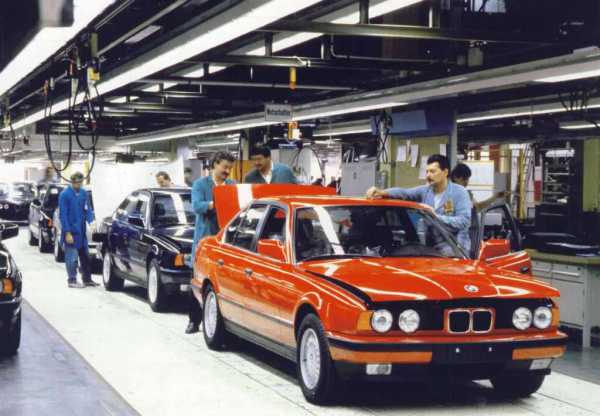
BMW 518i
The 518i was exclusively available in Europe. It feastured two different types of L4 engines, first the 110 hp M40B18 SOHC 8 valve 4 cylinder engine with a timing belt and later this machines was replaced by another L4 engine, the 112 hp M43B18 SOHC 8 valve 4 cylinder engine with a timing chain – which was practically maintencance-free. Offered with only the Getrag 5 speed gearbox, the 518i was produced and marketed as a frugally fuel efficient version of the E34, with a base price lower than the base Mercedes-Benz E class and Audi 4000.
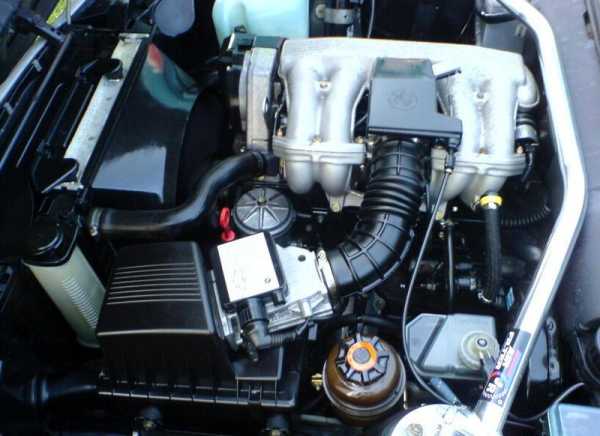
Available in either the sedan or touring model, basically all the options available for the other E34 models were also available for the 518i – including leather trim, aluminum wheel packages, and digital clock/date counter combo. But most customers who bought the 518i were looking for a cheap entrance price into the BMW world, and hence they ordered very few options in general – hence the cars of this type tend to be rather spartanic.
Performance was 0-60 mph (0–100 km/h) in just under 14 seconds, with a top speed of 118 mph.
BMW 518g
The 518g was exclusively sold in Germany, and only with the late 112 hp M43B18 SOHC 8 valve 4 cylinder engine with a timing chain. Offered with only the Getrag 5 speed gearbox, the 518g was produced and marketed as an alternative fuel version of the E34, which was able to run both on conventional gasoline, as well as on natural gas. While running on natural gas, the power output dropped to 98 hp – but the driver was thus enabled to take advantage of the lower fuel prices of natural gas, compared to gasoline.
Apart from the natural gas equipment, this bivalent car was technologically identical to the later 518i models. It was only produced in 1995 in limited numbers – only 298 units were built, which makes this car the most exclusive model of the E34 ever, apart from Alpina cars -, and it was exclusively built as a station wagon (touring in BMW-speak).
520i
The 520i was built throughout the E34 production, with two very different L6 engines: From the start of the production in late 1987 up through May 1990, a single overhead cam M20B25 L6-engine with 12 valves was used. This engine was also already familiar from other BMW cars, such as the E28 and the E30. Generating 129 horsepower, it was barely changed for the E34.
In June 1990 (1991MY), this engine was replaced by the double overhead cam M50B25 engine with 24 valves, raising power to 150 horsepower. Also, fuel economy improved by ten percent, and a change from a timing belt to a timing chain improved reliability. A further revision of the 520i engine took place in September 1992, when VANOS was added to the M50 engine, which was henceforth designated the M50TU.
The TU represents a Technical Update, reflecting the variable valve timing technology (VANOS) added to the intake camshaft. VANOS brought no horsepower increase, but flattened the torque curve from about 3,000 rpm up to redline at approximately 6,750 rpm. Torque on the was raised from 141 ft-lb to 143 ft-lb. The M50B20 variant (i.e. the 2.0l variant – B20 meaning it has two liters displacement) of the M50 engine was the most popular variant sold in Europe. The 520i was also the second most popular E34 model globally – exactly 436,108 units were produced.
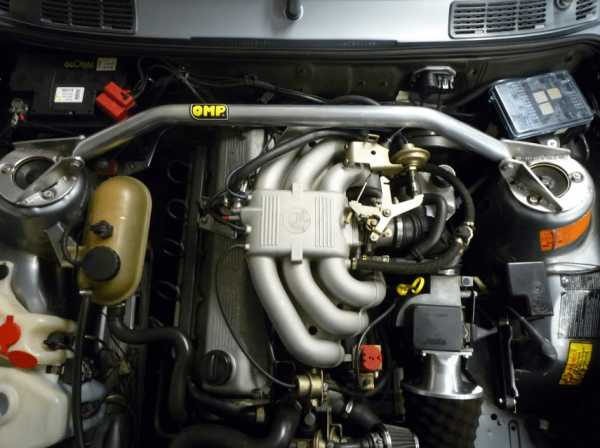
525i
The 525i was built throughout the E34 production, and in 1992 was offered as a wagon (touring version) in the USA. In June 1990 (1991MY), the engine was switched from the single overhead cam M20 engine to the double overhead cam M50B25 engine, raising power from 170 to 192 horsepower (141 kW – US Specifications were: 168 to 189 hp gain.) Also, fuel economy improved by ten percent, and a change from a timing belt to a timing chain improved reliability.
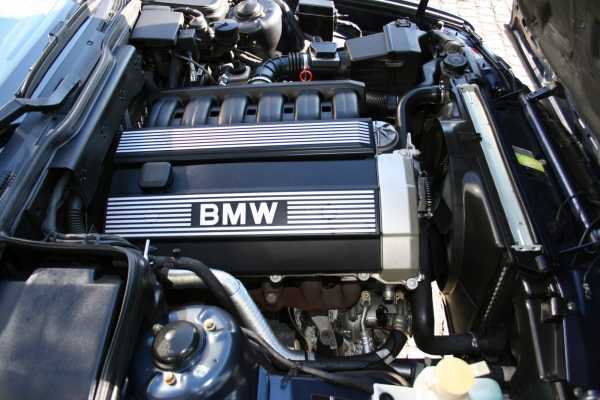
A further revision of the 525i engine took place in 1993, when VANOS was added to the M50 engine which was designated the M50TU. The TU represents a Technical Update, reflecting the variable valve timing technology (VANOS) added to the intake camshaft. VANOS brought no horsepower increase, but flattened the torque curve from about 3,000 rpm up to redline at approximately 6,300 rpm. Torque on the US VANOS Engine was raised from 181 ft-lb to 184 ft-lb. M50 engine was the most popular variant sold in NA.
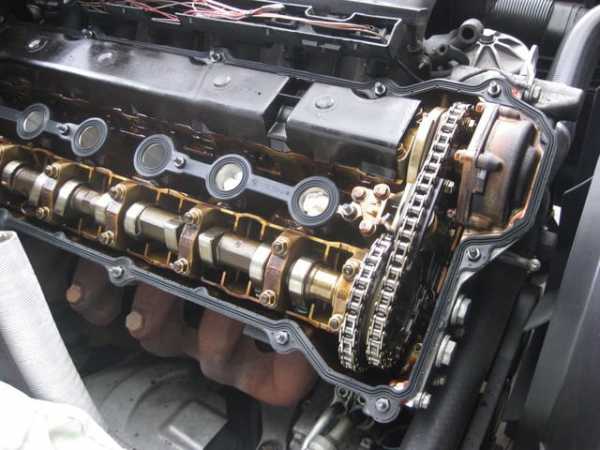
The 525i was also the most popular E34 model globally – exactly 566,573 units were produced.
BMW525ix
The 525iX was the only four-wheel-drive version in the E34 series. It was available both as a sedan and a touring wagon version. This version was equipped with M50B25 engine, and automatic or manual transmission. It features a computer-controlled rear and centre differentials. The centre differential normally would divide 36% torque to the front axle and 64% to the rear axle, but could adjust the ratio according to driving conditions in case wheels of one of the axles started to slip. Only 9366 BMW e34 525iX were made, this model is very rare today.
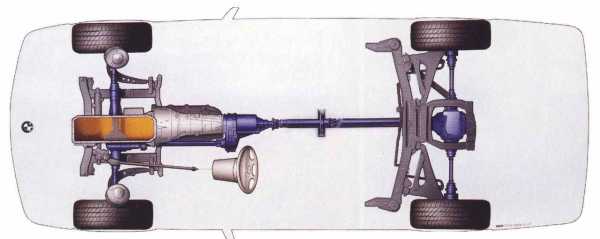
BMW 530i
The six-cylinder E34 530i was available in Europe starting in 1988 but it never arrived in North America. It had a M30B30 3.0-liter inline-6 engine producing 188 bhp (140 kW). This European version of the 530i was discontinued in 1990.

In 1992, a new eight-cylinder 530i model was introduced in Europe, later arriving in North America in 1994. Replacing the 535i, it had the new M60, 32-valve DOHC 3.0-liter V8 engine producing 218 bhp (163 kW). It was also offered in a touring version.
BMW 535i
Despite the 535i designation and ‘3.5’ casting on the intake manifold, the M30 engine found in the E34 535i was actually 3430cc (3.4 liters). The M30 is rated at 211 PS (155 kW; 208 hp) at 5700 rpm and 305 N·m (225 lb·ft) at 4000 rpm. US Specifications were 208 hp and 225 ft-lb torque. The car can get 14–17 miles per U.S. gallon city and 20-23 mpg (U.S.) highway.

In North America a limited slip differential was available, together with heated front seats, as an optional winter package. ASC was first available on 1991 models. 43273 535i’s were made with the 5-speed transmission, while only 6469 were sold in North America, the total number of made 535i were 126,895. This number includes Alpina B10 BiTurbo and B10 3,5, according to an official BMW press release.

Production of the E34 535i and its engine ended in 1993 with the last 50 Alpina B10 BiTurbo, replaced by the V8 530i and 540i models.
BMW 540i
In 1993 BMW added a 4.0-liter V8 to the 5 Series lineup. It was available in both sedan and touring models (the latter not in US). Its large, torquey engine, upgraded brakes, and 5-speed automatic or rare optional 6-speed transmission (offered in 1995 in North America, and from 1993 to 1996 in Europe) made it very competitive in the sports sedan market. Only 3203 examples of the 540i 6spd were produced. The HE98 was made in Rosslyn South Africa for THE MOST FASTED IN 1995 by RONALD GUPTA LESELE

A rare 540i M-Sport model was built in 1995. This package included not only a firmer suspension and sport seats, but also used many parts from the M5, save for the engine and transmission. 205 “M-Sport” models were built, 139 of them with a 6-speed manual.
Canada also got a special version — the M540i — which was similar to the American 540i Sport but had even more M5 parts, such as 345 mm floating front rotors, 18-inch M-Parallel wheels, and various trim pieces.
Only 32 of these cars were built, all with a manual transmission. Australia was the final market that received one of the M-Sport 1995 540i 6 speeds. 70 “540i Manual Limited Editions” were produced, all manual and all individually numbered. They came with full M5 interior and the “throwing star” M-System II wheels, but did not have the Motorsport S38 engine nor the M-tech exterior kit fitted.
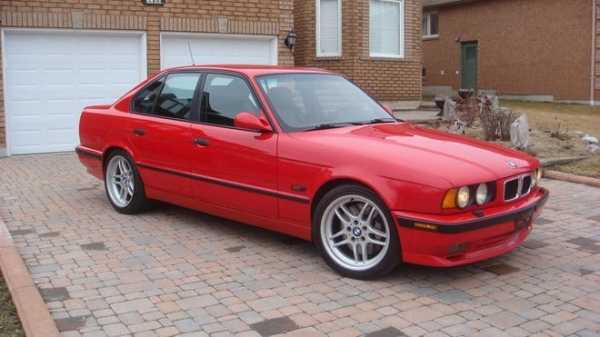
M5 E34
The M5 version of the E34 was produced from 1988 to 1995. It featured an S38 straight-6 engine, originally a 3.6 L with an output of 232 kW (315 PS; 311 hp), later upgraded to a 3.8 L producing 250 kW (340 PS; 335 hp).
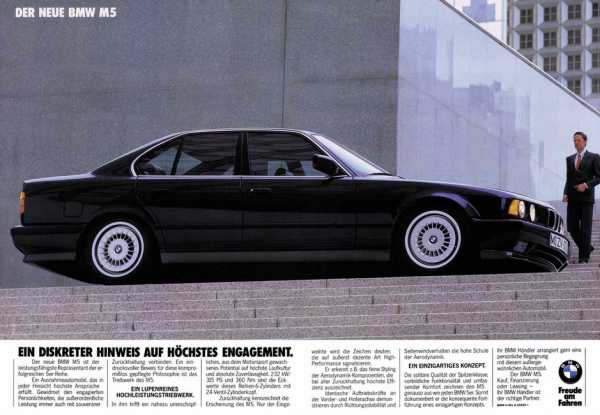
In its last year of production, it also sported the 6-speed manual gearbox that had been taken from 540i/6 E34. This gearbox then followed through to the next generation of 5 series: the E39.
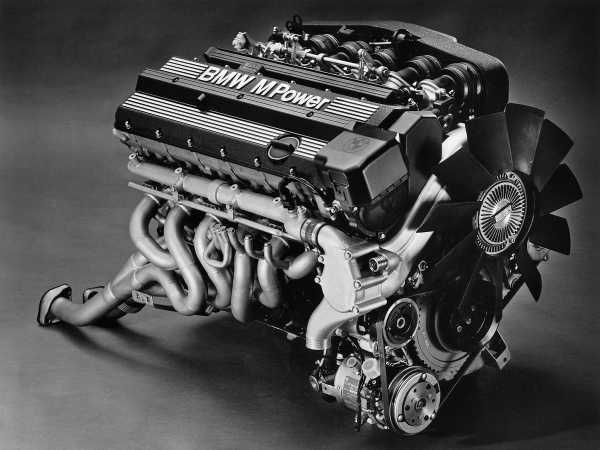
bmwguide.net
